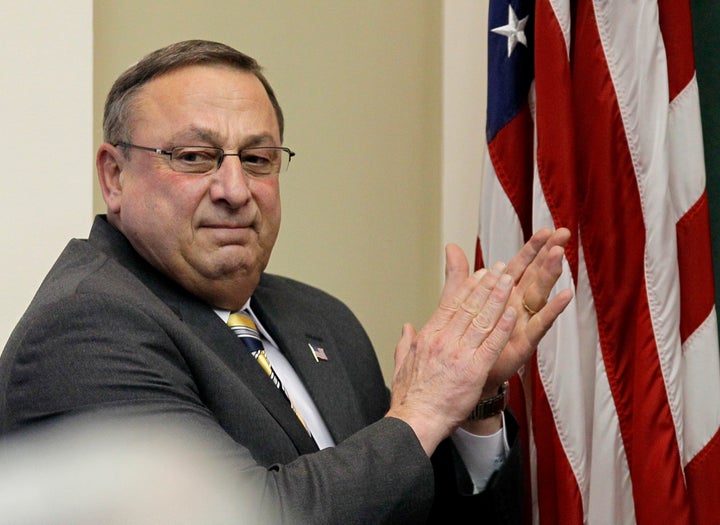
WASHINGTON -- The Maine Department of Labor quietly took down a mural depicting the state's labor history over the weekend, after Gov. Paul LePage (R) sparked controversy last week by ordering it removed and saying it was biased against businesses and employers.
“The mural has been removed and is in storage awaiting relocation to a more appropriate venue," said LePage Press Secretary Adrienne Bennett in a statement provided to The Huffington Post. "Workers and employers need to work together to create opportunity for Maine's 50,000 unemployed. We understand that not everyone agrees with this decision, but the Maine Department of Labor has to be focused on the job at hand."
"This is government censorship at its worst," said state Rep. Diane Russell (D), who has been an outspoken advocate on labor rights.
The mural will be moved to the Portland City Hall, according to the governor's office. State Rep. Ben Chipman, whose district includes the city hall, said, “While I do not agree with the governor’s decision to remove the mural, locating it to the site of the original Maine State House where it can be on public display and continue to be owned by the people of Maine will allow it to receive the recognition and appreciation it deserves." The city council will have to hold a public hearing on the matter and accept the mural on loan.
According to The Sun-Journal in Maine, "Labor Department employees seemed surprised to see [the] mural replaced by bare walls and spackling. Several popped into the waiting area as news about the sudden removal spread."

The mural, created by local artist Judy Taylor, depicts various scenes from Maine's labor history, including "Rosie the Riveter" at Bath Iron Works and a paper mill workers' strike in 1986.
The governor has said that he wants the mural out of the Department of Labor because it doesn't fairly depict the perspective of employers: "Were the bosses in the mural? Were the employers in the mural? History is about two sides ... I think it's inappropriate for [the mural] to be in the Department of Labor when everyone comes in, employers and employees, and they're confronted by one side of the question."
The mural was erected in 2008, after the Maine Arts Commission chose Taylor's piece through a jury selection.
Taylor told The Huffington Post that the reactions she has received to her art have always been "very very positive" -- from both business leaders and workers alike. She noted at one point, a businessman told her he was particularly moved by the painting because it reminded him of his grandmother's stories about working at a textile mill.
On Friday, LePage's office sent out a press release asking for new artwork "that depicts the cooperative relationship that exists between Maine’s job creators and the workers who power Maine’s economy" that can be displayed in the Labor Department's administrative offices and in the lobbies of career centers around the state.
In addition to the mural being removed, LePage's office also ordered the names be changed on eight rooms in the Department of Labor, many of which commemorate former labor leaders and one of which honors the first female U.S. Cabinet secretary.
LePage's office originally said that the governor made his decision after complaints from businesses owners, eventually pointing to a single anonymous letter, in which the author said that when looking at the mural, he or she felt like it was something from "communist North Korea."
In an e-mail to The Huffington Post, Bennett also pointed to a Sunday blog post by Mike Violette, a conservative radio host in Maine, along with other anonymous statements from employers who support what LePage is doing and believe the mural has helped make the Department of Labor a "militant, angry, business-hating environment."
There have been several protests at the Department of Labor, and one attendee suggested forming a human chain to block the mural's removal. When asked by WCSH 6 what he would do if protesters did indeed form a chain, LePage replied, "I'd laugh at them, the idiots. That's what I would do. Come on! Get over yourselves!"
